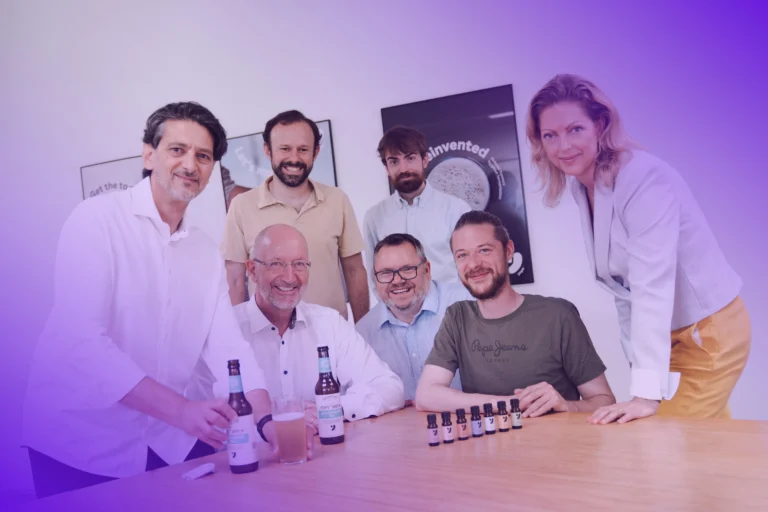

MIT team finds Miso fermented in space packs a nutty punch, hinting at tastier astronaut meals
Miso, the savory paste at the heart of countless Japanese dishes, has taken a cosmic leap. Researchers have discovered that miso fermented aboard the International Space Station (ISS) developed a distinctly nutty and roasted flavor compared with batches fermented on Earth, opening new possibilities for expanding the culinary horizons of astronauts.
In March 2020, a team led by Maggie Coblentz, a researcher with the MIT Space Exploration Initiative, and food researcher Josh Evans of the Technical University of Denmark, launched the first experiment of its kind: fermenting miso in orbit. A small batch of cooked soybeans, salt, and koji – a fungus-inoculated grain – spent 30 days fermenting on the ISS before returning to Earth for analysis, including taste tests.
Though miso’s traditional umami character remained intact, the space batch’s flavor shifted in intriguing ways. A panel of 14 tasters described the miso fermented on the ISS as nuttier and more roasted than identical miso made on Earth. Chemical analyses backed up these observations, revealing higher levels of compounds linked to cheese-like and honey-like flavors.
“It demonstrates that fermenting food in space is feasible,” said Coblentz. “I was thinking about expanding food products for astronauts beyond the freeze-dried military ration style.”
The project grew out of conversations between Coblentz and Evans about the limits of current space cuisine. While Earthbound chefs and consumers have embraced fermented foods from kimchi to kombucha, very little is known about how fermentation might function in microgravity. Experiments on Earth hinted that space’s unusual conditions could alter the process, but fermentation had never before been attempted aboard the ISS.
When an opportunity arose to send an experiment into orbit, miso was the team’s pick for both practical and scientific reasons. Miso’s paste form meant it posed little risk of leaking and damaging delicate spacecraft systems, unlike liquid ferments such as kombucha. Additionally, miso’s fermentation timeline fit within the available 30-day window aboard the ISS, and recent research into miso fermentation on Earth provided a solid basis for comparison.
There was also a culinary appeal. “Used in soups, sauces, and marinades, miso is nutritious, has a strong umami flavor, and a rich cultural history,” said Evans, who studies how ecosystems of microbes shape the flavors of fermented foods.
The fermentation process involves two major steps. First, koji is grown in an oxygen-rich environment. Once mixed with soybeans and salt and sealed in a container, oxygen levels drop, killing the fungus and allowing salt-tolerant bacteria and yeasts to drive further fermentation. These microbes break down sugars into the savory compounds that give miso its signature taste. Factors like temperature, pressure, and gravity can influence the balance of microbes and the flavors they produce.
For the experiment, Evans’ team prepared about 2lbs (1kg) of miso and divided it into three portions: one destined for the ISS, one for Coblentz’s lab in Massachusetts, and one kept in Denmark with Evans. All three batches were frozen before and after fermentation to reduce differences unrelated to the spaceflight.
To track environmental conditions during the mission, the researchers built “sensing boxes” that recorded temperature, humidity, pressure, and radiation throughout fermentation. However, the space portion of miso experienced an unexpected rise in temperature, reaching 97.3 degrees Fahrenheit (36.3 degrees Celsius), compared with 68-77 degrees Fahrenheit (20-25 degrees Celsius) for the Earth-based batches.
That heat spike may have influenced the microbial makeup of the space miso. All three batches shared most of their microbial communities, dominated by Staphylococcus species. But only the ISS batch contained Bacillus velezensis, a microbe previously found in fermented soy products.
“All we can say is it’s different there than it is here. But there’s so many reasons why that could be, and probably it’s all those things working together,” said Coblentz.
Bringing fermented food into space is not without challenges. Space agencies tightly control astronauts’ diets because the stakes of foodborne illness in orbit are so high. When kimchi was sent to the ISS in 2008, it was irradiated to kill microbes and halt further fermentation. The miso’s unplanned heat exposure illustrates the difficulty of maintaining ideal fermentation conditions in space.
Andrew MacIntosh, a fermentation expert at the University of Florida who was not involved in the study, called the miso experiment a significant step forward. “Space opens up a whole new avenue,” he said. “A lot of the value that we see in this paper is the difficulties that these researchers went through trying to glean information about how space would be different.”
Looking ahead, Coblentz believes fermentation could bring more than just nutrition to spacefarers. It could also offer variety, comfort, and a taste of Earth’s culinary traditions.
“Drawing upon our deep earthly history of working with food and fermentation across different cultures around the world – it has sort of a poetic aspect to it,” she said.
If you have any questions or would like to get in touch with us, please email info@futureofproteinproduction.com


-p-800.jpg)



